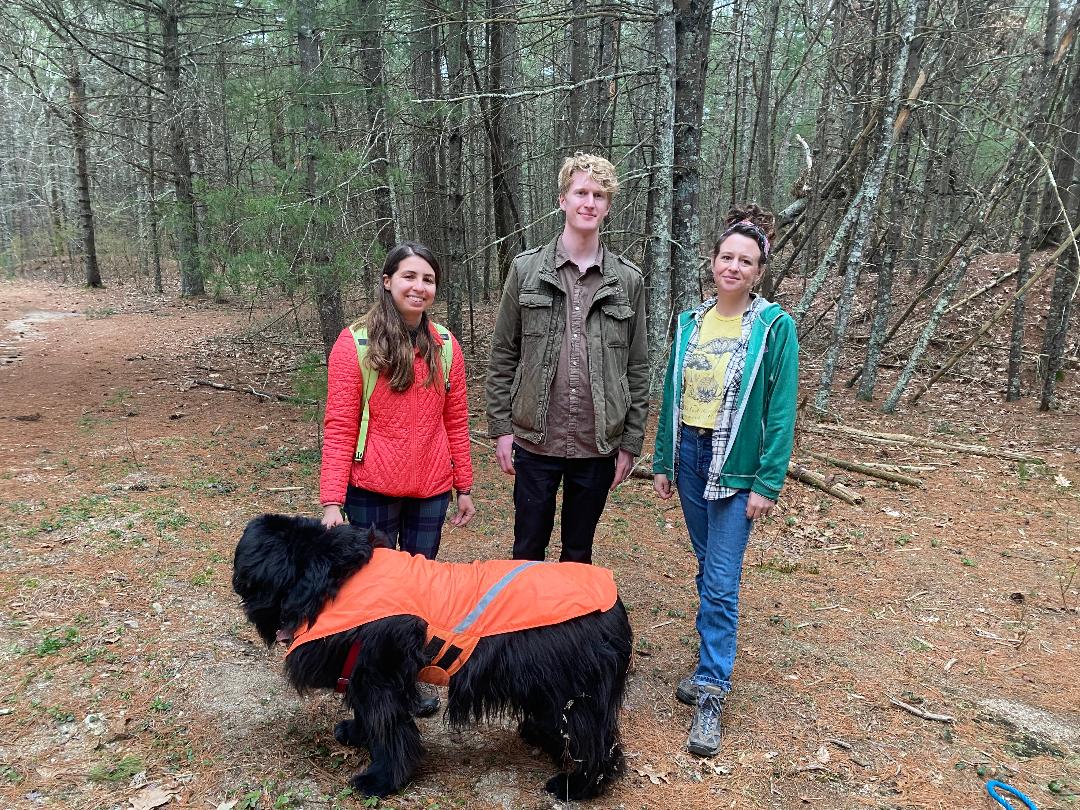‘Trees for Trout’ Uses Christmas Trees for Fish Habitat, River Restoration
January 22, 2024
EXETER, R.I. — Gently used Christmas trees are giving the state’s rivers, and all the aquatic species that call those waters home, a boost against climate change.
Every year in early January the state Department of Environmental Management invites the public to donate their used, conifer Christmas trees (no fake plastic ones allowed) for its “Trees for Trout” habitat restoration program.
The program, a collaboration between DEM and the Rhode Island Chapter of Trout Unlimited, uses the trees to build revetments in cold-water streams that are designed to capture sediment and bulk up riverbanks, while also providing habitat and cover for brook trout, a species identified as having the greatest conservation need in the state’s 2015 Wildlife Action Plan.
“It’s mimicking the natural process of wood falling into rivers,” DEM fisheries biologist Corey Pelletier said during a recent interview with ecoRI News. “Trees near the river would fall in anyway and start this process on its own.”
Pelletier has been collecting Christmas trees and building revetments with Trout Unlimited since 2018. According to Pelletier, a single revetment contains on average 50 to 100 donated Christmas trees, typically submerged in a half-circle shape. DEM hosted a drop-off day Jan. 6 at the Wood River Management Area in Exeter, and collected 435 Christmas trees, a record number for the program.
According to Pelletier, the number of donated trees has increased every year, fast becoming one of DEM’s Fish and Wildlife office’s most popular programs. The drop-off day allows the public to recycle their trees for a good cause and learn more about river health and clean water.
DEM will hold onto the trees until July or August, when rivers are at their lowest flowing ebb and Pelletier and a group of volunteers from Trout Unlimited will then submerge them in the water.
The revetments are placed in freshwater rivers that have been identified as over-widened and could use stabilization to prevent further erosion of their banks. The trees capture sediment from runoff as it is washed into the river, and — similar to composting — decay and become part of the riverbed itself.
“Rivers can be over-widened for a variety of reasons,” said Pelletier, ranging from the impacts of beaver dams pushing water further onto floodplains to decades of stormwater runoff.
“Everything I’ve read talks about how most of the landscape was devoid of trees, completely deforested for agriculture,” Pelletier said. “When that happens in the landscape, you have much faster runoff rates, and less vegetation to absorb the water. Rivers have to expand to be able to meet the velocity of the discharge needs of the land.”
It can take years for the revetments to capture enough sediment to narrow a river’s flow, but there’s a bonus. In the meantime, the submerged trees act as habitat and provide protection from predators for a number of cold-water aquatic species, including brook trout, redfin pickerel, and some species of shiner fish.
Wood from fallen trees and branches is typically the only cover in a lot of freshwater rivers. There are whole sections of river devoid of any kind of physical structure for small aquatic species. The trees will also begin to revegetate with native grasses and wildflowers.
The revetments provide a much-needed boost to brook trout, as the cold-water species come under increased environmental stressors from climate change. Pelletier said part of his work is monitoring water temperatures in the state’s inland rivers, and that some temperatures are approaching a critical stressful level for brook trout.
Pelletier said the ultimate highlight of the project was being able to do so much with so little resources compared to traditional river restoration.
“Typical river restoration involves heavy equipment, engineering designs, and this is just a small project that we can do to benefit river habitats,” Pelletier said. “I think that’s one thing that’s kind of cool and unique about it, is that we’re just using volunteer hands and that’s pretty much it.”



